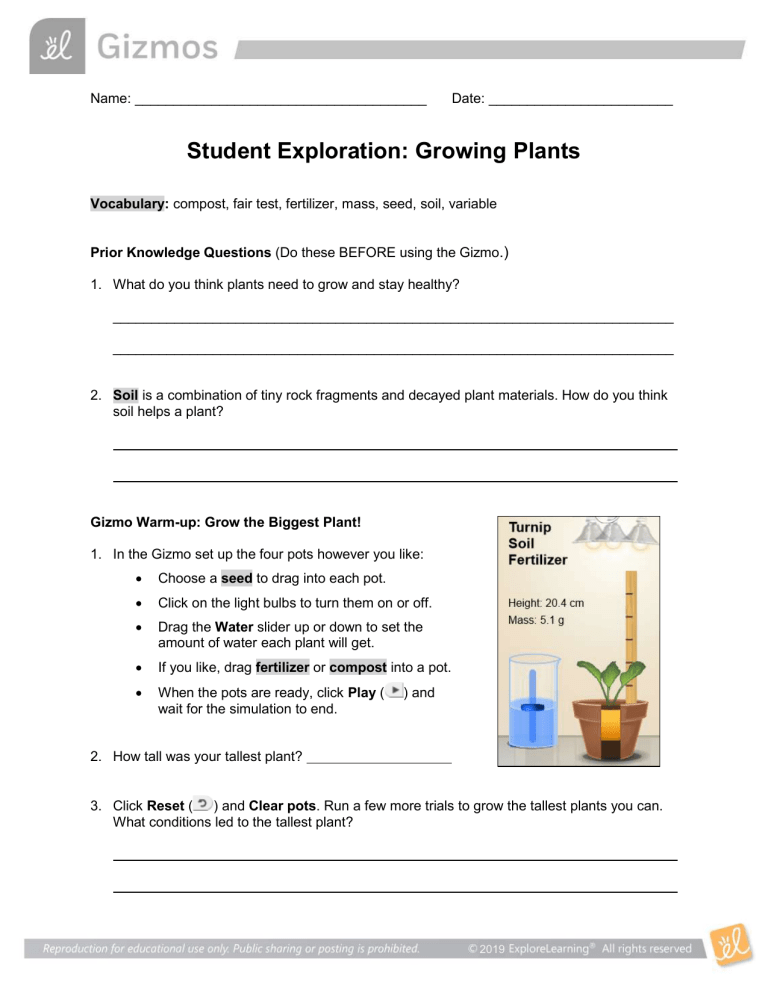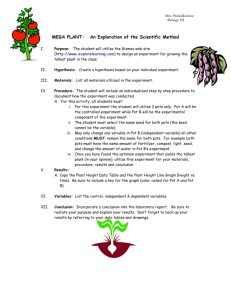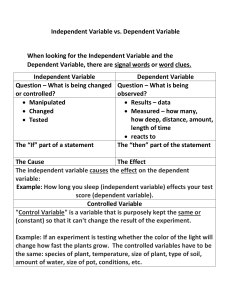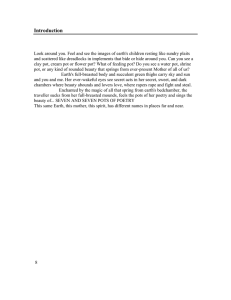
Name: ______________________________________ Date: ________________________ Student Exploration: Growing Plants Vocabulary: compost, fair test, fertilizer, mass, seed, soil, variable Prior Knowledge Questions (Do these BEFORE using the Gizmo.) 1. What do you think plants need to grow and stay healthy? _________________________________________________________________________ _________________________________________________________________________ 2. Soil is a combination of tiny rock fragments and decayed plant materials. How do you think soil helps a plant? Gizmo Warm-up: Grow the Biggest Plant! 1. In the Gizmo set up the four pots however you like: Choose a seed to drag into each pot. Click on the light bulbs to turn them on or off. Drag the Water slider up or down to set the amount of water each plant will get. If you like, drag fertilizer or compost into a pot. When the pots are ready, click Play ( wait for the simulation to end. ) and 2. How tall was your tallest plant? 3. Click Reset ( ) and Clear pots. Run a few more trials to grow the tallest plants you can. What conditions led to the tallest plant? 2019 Get the Gizmo ready: Activity A: Wet and dry Click Reset. Click Clear pots. Question: Do seeds need water to grow? 1. Form hypothesis: Do you think seeds need water to start growing? Explain why or why not. 2. Set up Gizmo: In the Gizmo, set up the four pots like this: Pot A: Tomato seed, two lights on, 0 mL water per day Pot B: Tomato seed, two lights on, 40 mL water per day Pot C: Tomato seed, two lights on, 70 mL water per day Pot D: Tomato seed, two lights on, 100 mL water per day 3. Experiment: Click Play to start. When the simulation is done, observe the plants. 4. Collect data: Fill in the data table below with the height and mass of each plant on day 50. (The mass of a plant is the amount of matter in the plant. It is related to how heavy it is.) In the last column describe what each plant looks like. Pot Water/day (mL) A 0 mL B 40 mL C 70 mL D 100 mL Height (cm) Mass (g) 5. Draw conclusions: Do seeds need water to grow? Appearance Explain: 6. Revise and repeat: Is more water always better? Create your own experiments to find the ideal amount of water for each kind of plant. Explain your findings below. 2019 Get the Gizmo ready: Activity B: Light and dark Click Reset. Click Clear pots. Introduction: A variable is something that can be changed, such as the amount of light. In a fair test, only one variable is changed at a time. For example, if you are testing how light affects plants, you would change the amount of light but give each plant the same amount of water and the same kind of soil. Question: How does the amount of light affect how plants grow? 1. Form hypothesis: How do you think the amount of light affects how plants grow? 2. Set up Gizmo: In the Gizmo, place a bean seed in each pot. Set the Daily water to 70 mL in each pot. Turn off all the lights in pot A. Turn on one light in pot B. Turn on two lights in pot C. Turn on three lights in pot D. 3. Collect data: Click Play and wait for the simulation to finish. Fill in the table below. Pot A Number of lights 0 lights B 1 light C 2 lights D 3 lights Height (cm) Mass (g) Appearance 4. Draw conclusions: How did the amount of light affect bean plants? 5. Think and discuss: Why do you think plants grown with less light might grow taller than plants grown with more light? If possible, talk about this with your classmates and teacher. 2019 Get the Gizmo ready: Activity C: Design an experiment Click Reset. Click Clear pots. Question: You come up with the question! (See below.) 1. Create question: Fill in the blanks below with the variable and the type of plant you would like to study in this activity. (Do not repeat an experiment you have already done.) How does affect a plant? 2. Form hypothesis: What is your hypothesis for the question above? 3. Set up Gizmo: Set up the pots to test the variable you are investigating. Be sure to create a fair test. Describe how you set up each pot in the table below. Pot Type of seed Water/day Number of lights Type of soil A B C D 4. Collect data: Click Play to start. When the simulation is done, fill in the table below. Pot Height (cm) Mass (g) Appearance A B C D 5. Draw conclusions: What did you discover? Why do you think it happened that way? 2019


